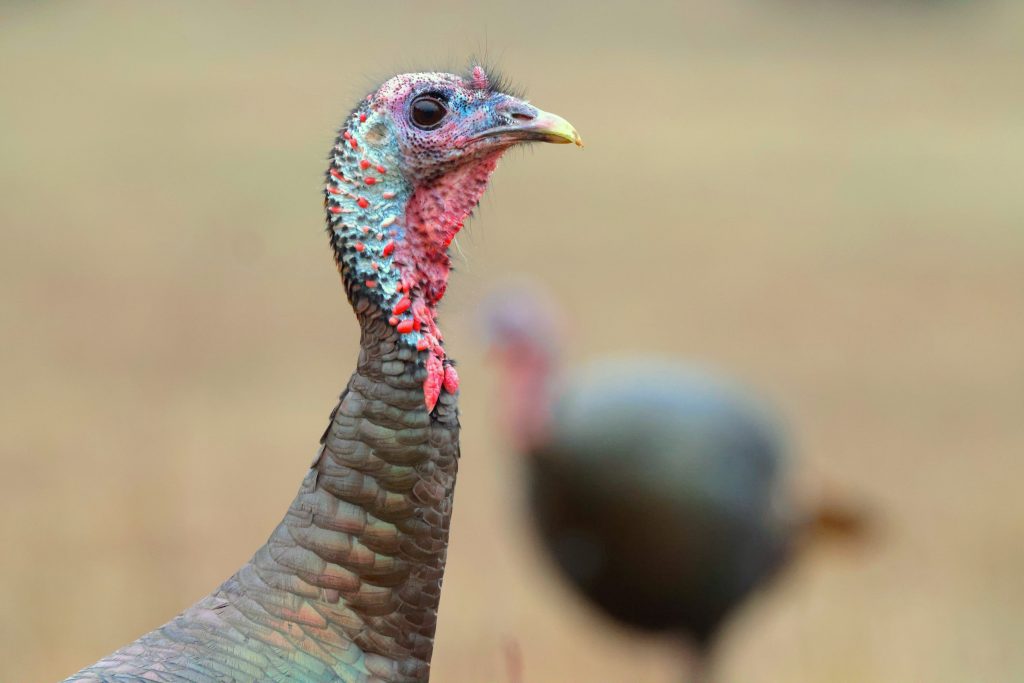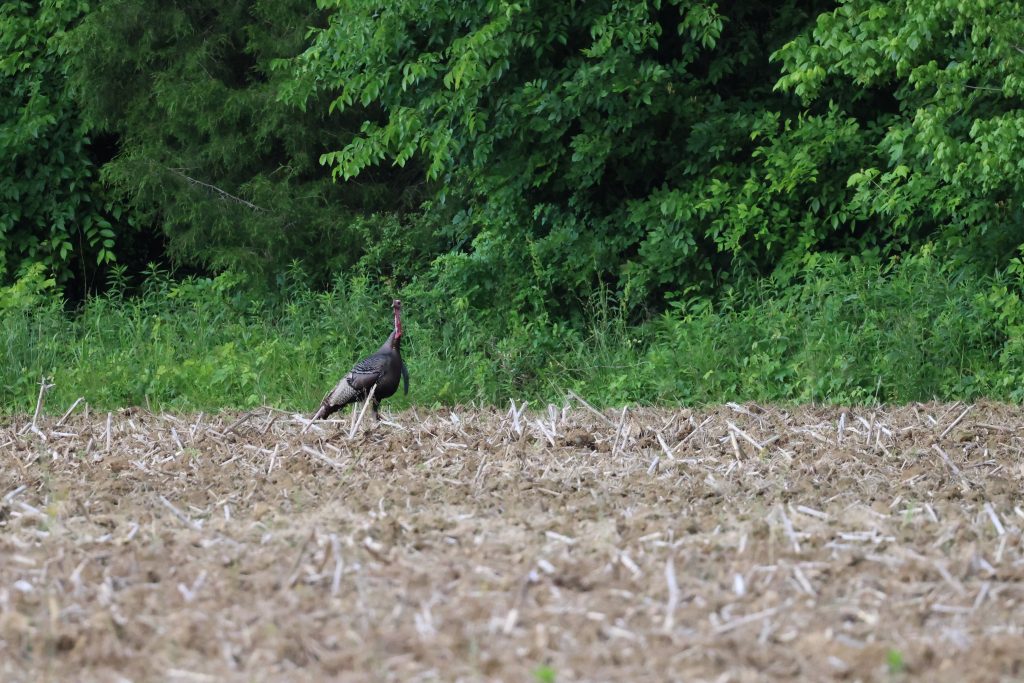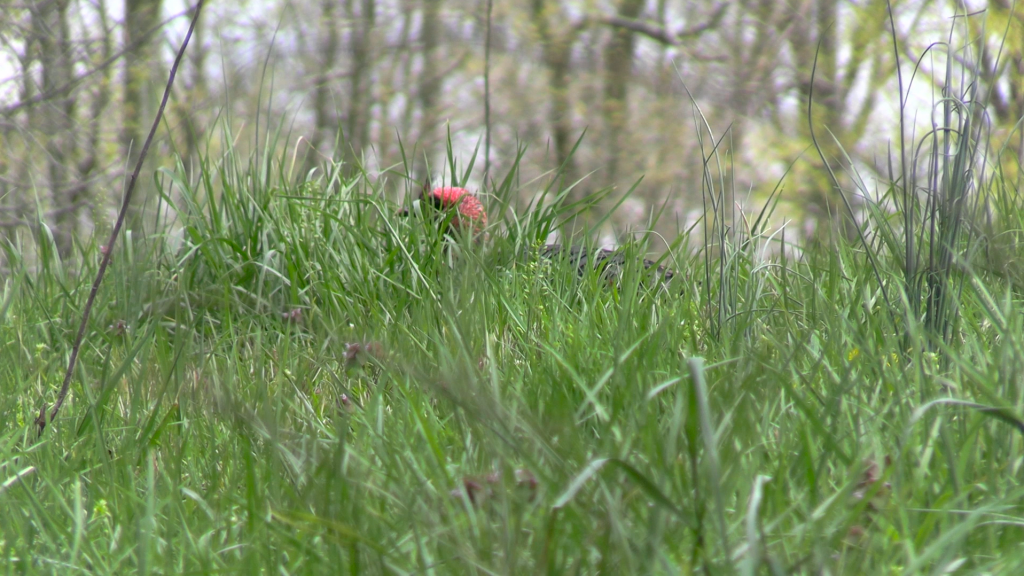How Turkeys Perceive Their Environment
The meleagris gallopavo, more commonly referred to as the wild turkey, is a frustrating and worthy opponent for hunters. While their brain is only the size of a quarter, these critter routinely find ways to foil even the greatest of well-designed hunting plans. So, are turkeys geniuses, do they just have a lot of luck, or what? To answer that, one must understand how turkeys perceive their environment.
Most animals have five different senses, including sight, hearing, smell, touch, and taste. That said, wild turkeys rely on one more than the rest (sight). Still, all are important. Here are their senses, in order of importance.
No. 1: Wild Turkey Sight

Wild turkeys have very adept vision. They use this primarily to find food, such as insects, nuts, seeds, vegetation, etc. However, they also use sight as their primary defense mechanism against hunters, predators and other threats. Furthermore, their sight allows them to see and process visual data very quickly. This results in incredibly fast reaction times.
According to Dr. James G. Dickson, who is a renowned wild turkey biologist, determined turkeys have flattened corneas, can see certain colors, and have a great field of vision due to their eyes being on the side of their head (a common trait for prey animals). Their periscopic head gives them a 360-degree field of view with a slight turn of their head.
Furthermore, turkeys have monocular vision. With monocular vision, turkeys must turn their head side to side to piece together distances. So, while their depth perception is worse than a predator’s (such as a human), their peripheral vision is superior, and more of their environment is in focus at any given time. In short, a human’s sight is more tunnel-vision-esque than a wild turkey’s. Simply put, turkeys can see further, see more sharply and piece together more details (and do so faster) than humans.
Not only do turkeys see many of the colors we see on the spectrum, but they also see UV light. Oftentimes, clothing and clothing detergent have UV brighteners in these, and when camo has elevated levels of this unwanted element, hunters appear as glowing beacons to these sight-centric birds. Using UV killers on clothing and other gear is of utmost importance.
No. 2: Wild Turkey Hearing
While it’s unknown exactly how well turkeys can hear, it’s believed to be slightly better than a human’s ability. However, turkeys seem to hear lower frequencies, and can even hear over greater distances. In short, turkeys use hearing to drive their visual focus. If they hear something that sounds unnatural to their environment, or notably dangerous to their existence, it drives their line of sight toward the source of the sound(s).
No. 3: Wild Turkey Touch
Sense of touch also plays a direct role in avoiding predation, but not as threat detection. This sense is almost solely involved with balance, walking, flying, feeding, watering, social interaction and other general aspects of life. So, touch is very important in survival, especially in terms of escaping predation and other threats.

No. 4: Wild Turkey Taste
Another sense that doesn’t play a significant role in predatory survival, taste is something that can drive feeding, and that’s about it. They do have taste buds, but not as many as mammalian species. Thus, they do enjoy a variety of tastes, but the spectrum is much narrower than humans and other animals.
No. 5: Wild Turkey Smell
It’s long been believed that turkeys have no sense of smell. That’s false. Turkeys do have a sense of smell, although greatly diminished compared to other birds and species. Again, according to Dickson, the size of Olfactory lobes in the brain are directly linked to the heightening of this sense. Given that a turkey’s are quite small, it’s likely they can’t smell very well, but certainly do have the sense.
Information Processing: Life as a Prey Animal
Let’s analyze this from the base level. Simply put, turkeys are prey animals, and low-level ones at that. A lot of animals eat them, making life even more difficult. While a turkey that reaches adulthood can live up to 10 years, most do not live that long.
So, for the big question. Can wild turkeys reason? No, wild turkeys cannot reason. They are merely reactionary, but they are incredibly good at it. Their keen senses allow them to react very quickly, even to seemingly insignificant triggers.
A Hunting Application: Getting Inside the Bubble

What does all of this mean to hunters? Several things. Numerous takeaways exist. But a few rise above the rest as most important.
First, be still. Secondly, be quiet. Third, scent doesn’t matter unless you like shooting turkeys from 5 yards away, and even then, you need to stink pretty badly to bugger the hunt.
And fourth, many hunters have expressed that turkeys have a comfort zone. To remain alive, they must detect danger while it’s still too far away to get them. Over time, as they become more successful at this, turkeys realize their focus must remain further out. This produces a comfort zone inside of a certain distance. In more open settings, this is likely 40-50 yards and in. Within cover, it’s probably more like 20-30 yards and in.
All things considered, if a hunter can get within that comfort zone, they are much less likely to be spotted than just outside of that zone. It might seem counterintuitive, but some of the greatest turkey hunters subscribe to it. Of course, that’s no excuse to move around, but it is important to understand, especially if you falsely believe that turkey can’t see your toe twitch from 100 yards out.
Obviously, a wild turkey isn’t a genius. But it is a world-class exhibitor of sensory and reactionary abilities. How turkeys perceive their environment is the reason behind their ability to survive.
CONNECT WITH US
National Wild Turkey Federation
770 Augusta Road, Edgefield, SC 29824
(800) 843-6983
National Wild Turkey Federation. All rights reserved.
